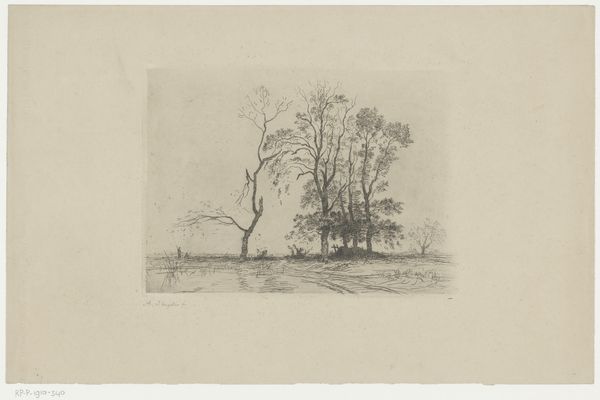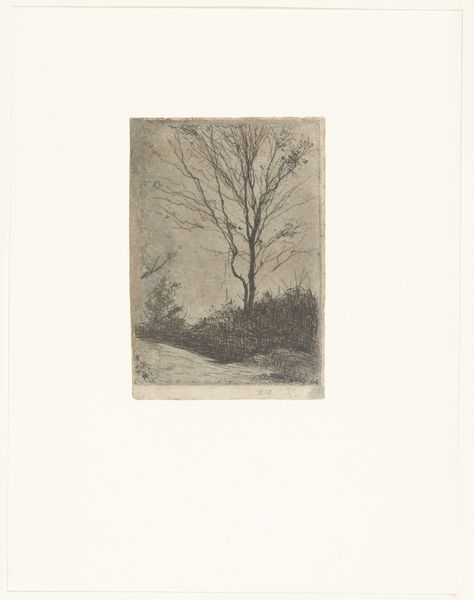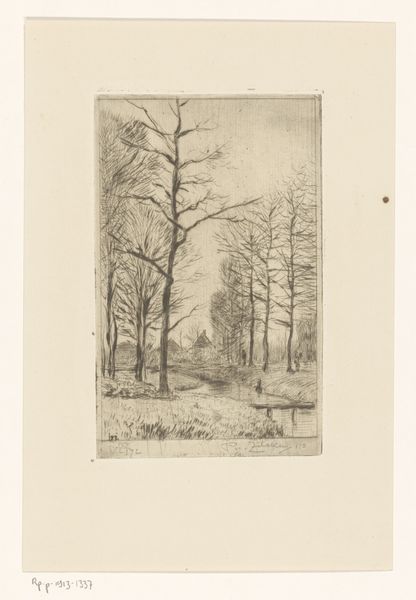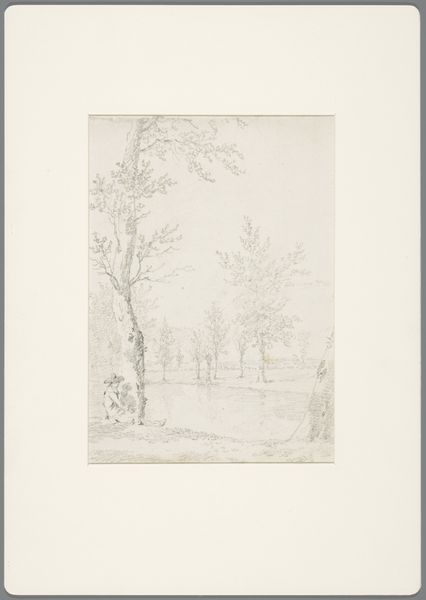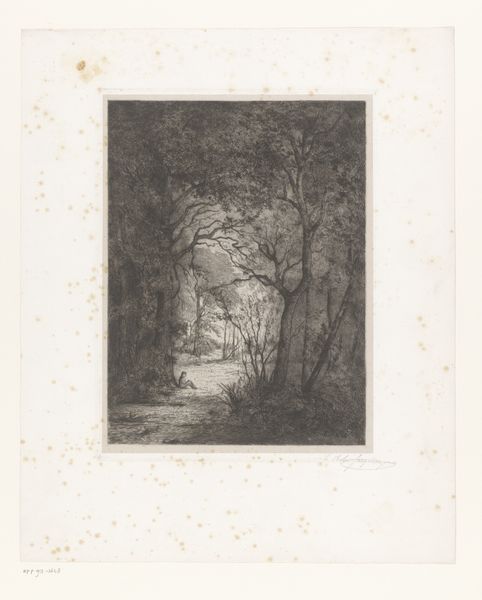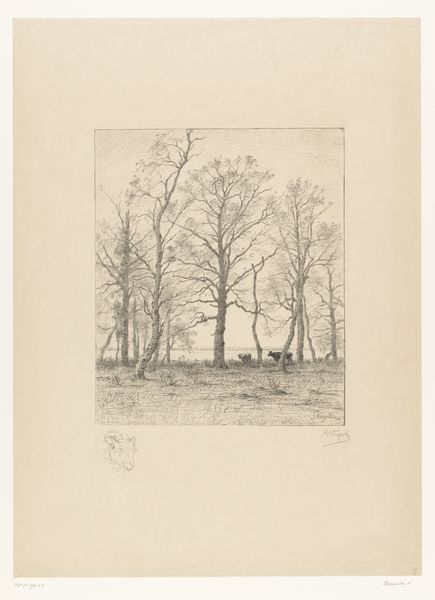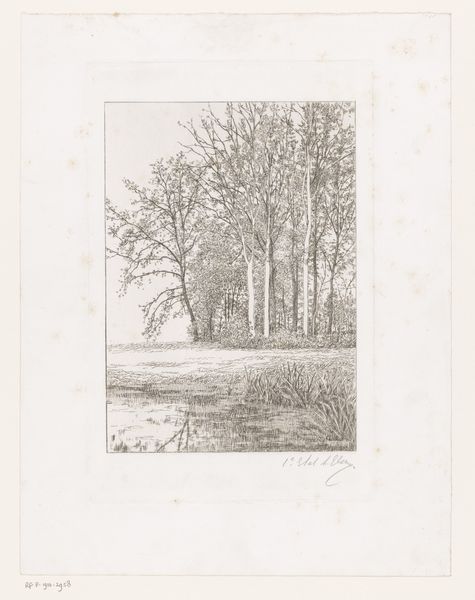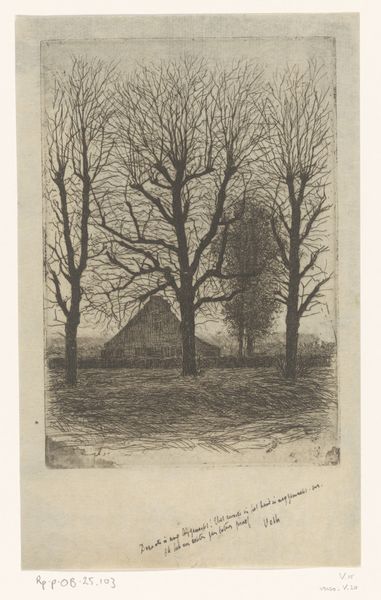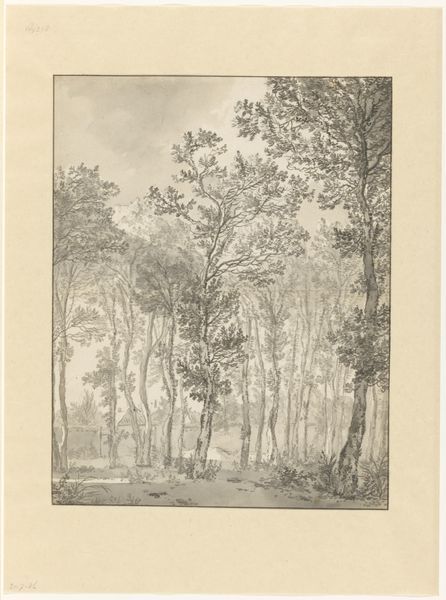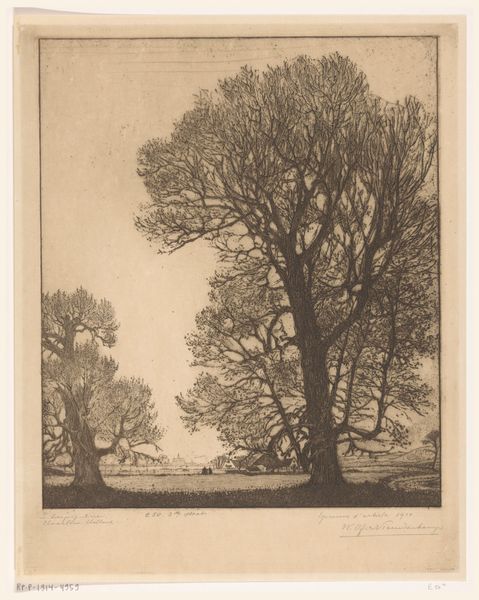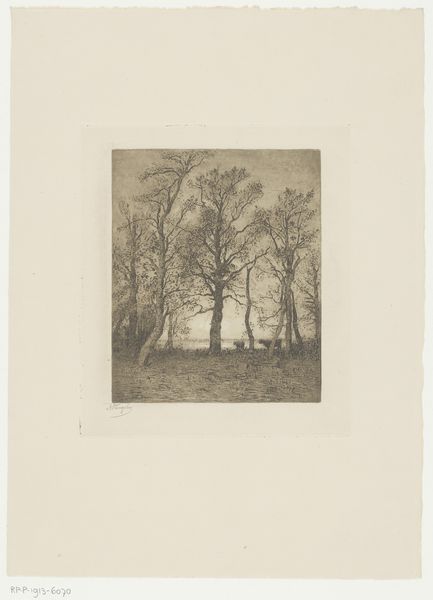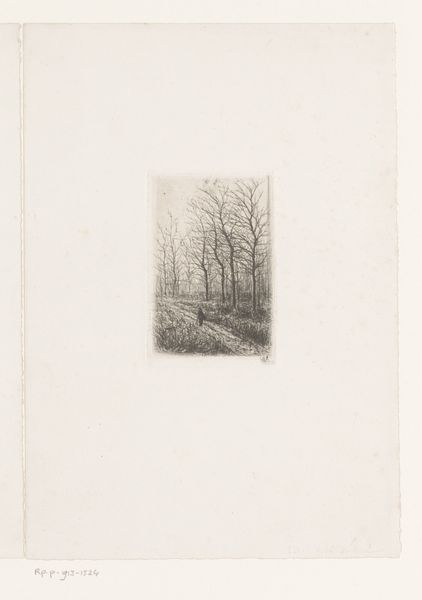
print, etching
# print
#
etching
#
landscape
#
realism
Dimensions: height 280 mm, width 200 mm
Copyright: Rijks Museum: Open Domain
Editor: Here we have "Two Herons in a Swamp" by Théodore Tscharner, sometime between 1836 and 1906, made with etching. The detail achieved in the trees using just etching is fascinating. What are your thoughts on it? Curator: The etcher’s craft here really brings the means of production to the forefront. Consider the labour invested in the dense lines and cross-hatching, especially evident in the water. It suggests an environment, the swamp, is literally made and remade by human activity. What effect does that detailed reproduction have on your understanding of nature represented here? Editor: I hadn’t thought of it that way! I guess I was focusing on the scene itself. That intensive mark-making does add another layer of mediation, and perhaps a critique, considering its roots in realism. Curator: Precisely! The “realism” itself becomes a manufactured idea. Notice how even the atmospheric conditions, the clouds and the reflections, are painstakingly constructed. Tscharner almost overworks it, wouldn’t you agree? He really wants to show what an etching can *do.* Editor: Definitely. It almost seems to compete with painting in its ambition. Is he challenging traditional views that would privilege paint over printmaking, art versus craft? Curator: It's difficult to tell definitively but he almost seems to do just that by celebrating the technical virtuosity of etching, bringing attention to labor and craft. It gives the whole natural scene a made, constructed character. Do you agree? Editor: I do. I never looked at landscape art with labour in mind before, which makes it interesting in terms of social context. Curator: Exactly!
Comments
No comments
Be the first to comment and join the conversation on the ultimate creative platform.
